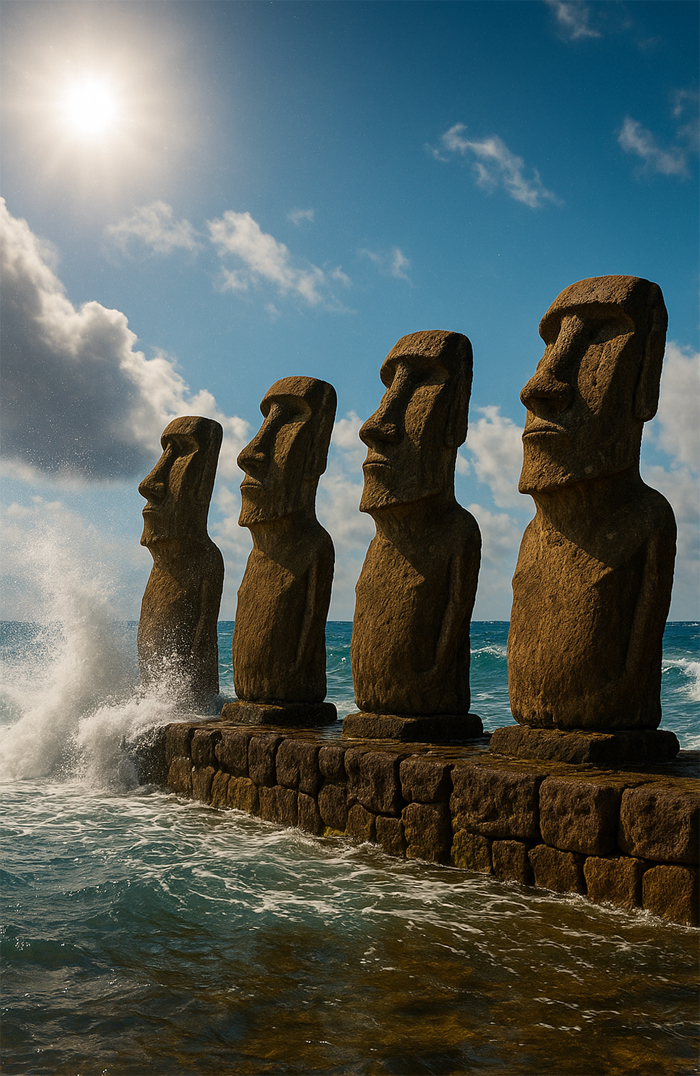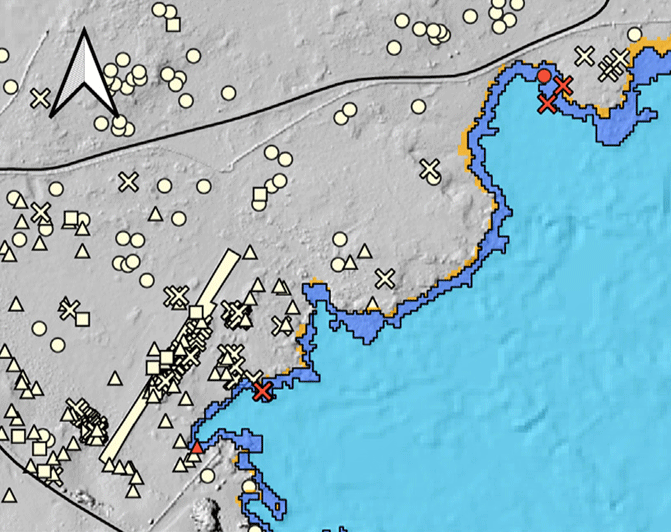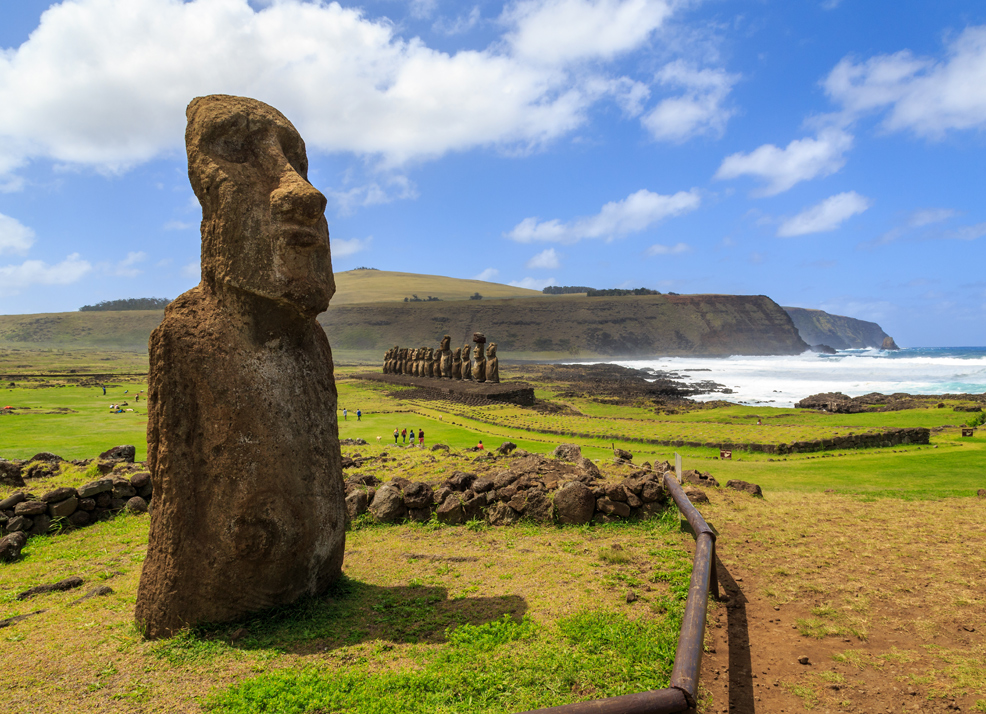
22nd August 2025 Iconic statues threatened by rising sea levels A study published in the Journal of Cultural Heritage finds that rising sea levels could threaten the iconic moai statues of Easter Island by 2080.
They have endured for over 500 years, but the moai statues of Rapa Nui (Easter Island) now face an existential threat within a single human lifetime. A new study warns that rising seas could expose the island's most iconic ceremonial platform, Ahu Tongariki, to regular wave impacts by 2080. Rapa Nui, located 2,300 miles (3,700 km) from Chile's Pacific coast, is home to around 900 multi-tonne moai carved by the Indigenous Polynesian peoples between the 13th and 16th centuries. Many of these statues were placed on stone platforms known as ahu, which line the island's rocky coastline. The largest and most famous of these is Ahu Tongariki, a huge 200-metre structure supporting 15 statues and considered the pinnacle of Polynesian megalithic architecture. Together, the moai statues and their platforms symbolise ancestral power, reaffirm cultural identity, and today form the backbone of Rapa Nui's tourism economy. UNESCO designated the island a World Heritage Site in 1995. The new research, published in the Journal of Cultural Heritage, comes from a team at the University of Hawai'i at Mānoa. Using drone surveys, sonar mapping and computer modelling, the scientists created a detailed "digital twin" of the entire Tongariki Complex. They then simulated wave run-up under various sea-level rise scenarios. Some cultural assets are already being exposed to occasional flooding, and the number at risk could triple by 2080. The waves are projected to reach the back wall of Ahu Tongariki itself, with the possibility of overtopping parts of the platform.
The study also highlights that threats may arrive earlier than inundation models suggest. Salt spray and coastal erosion could begin to degrade the structures decades in advance, while intensifying wave energy due to global warming will amplify the risks. "Unfortunately, from a scientific standpoint, the findings are not surprising," said lead author Noah Paoa, a doctoral student in the Department of Earth Sciences at UH Mānoa. "We know that sea level rise poses a direct threat to coastlines globally. The critical question was not if the site would be impacted, but how soon and how severely. Our work aimed to forecast potential timelines by which we could expect the impacts to happen. Finding that waves could reach Ahu Tongariki by 2080 provides the specific, urgent data needed to incentivise community discussion and planning for the future." For the Rapa Nui community, the stakes are both cultural and economic. These monuments are not just archaeological relics but living symbols that continue to shape identity and traditions. Any damage to Ahu Tongariki could undermine the island's UNESCO status and threaten its vital tourism industry. Possible responses include infrastructure adjustments, protective barriers, ecosystem-based defences, or even relocating some monuments. Yet each option will come with challenges – as the study explains – from environmental disruption to cultural sensitivities. Ultimately, the authors argue that the Rapa Nui people themselves must guide these decisions. The findings echo a wider crisis unfolding across the Pacific, where coastal heritage sites face mounting pressures from climate change. As seas continue to rise, safeguarding these monuments will require not only scientific foresight but also deep respect for the communities that built them. "The irreplaceable coastal cultural heritage sites in Hawai'i and across the Pacific face the same urgent threat," Paoa added. "Our research in Rapa Nui serves as a vital blueprint, demonstrating how we can use science to forecast risks to sacred places, such as coastal heiau and ancestral burial sites. By developing and applying these methods we hope we can help protect what is precious to the people of Hawai'i – provided such work is guided by, and deemed appropriate by, the Native Hawaiian community."
Comments »
If you enjoyed this article, please consider sharing it:
|
||||||









